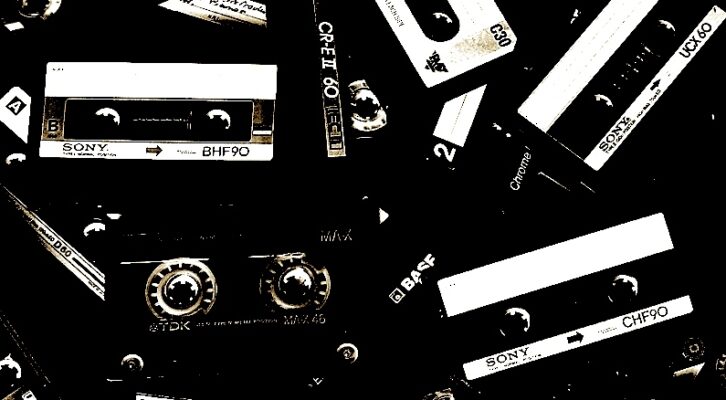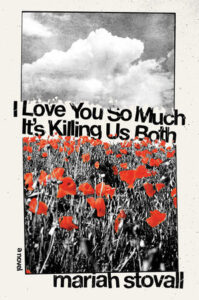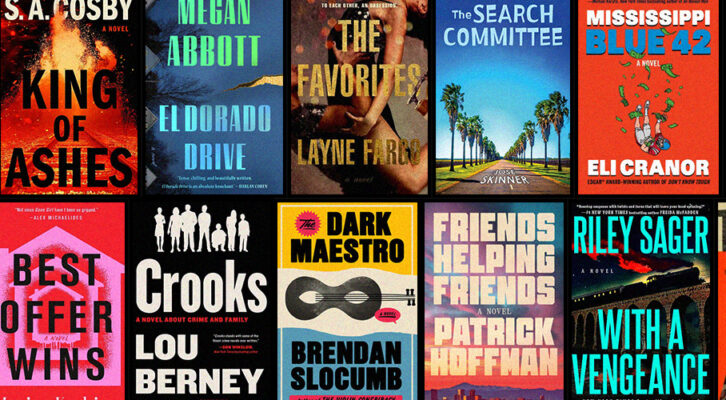
Literary Loops: Mariah Stovall on the Role of Repetition in Music and Fiction
“I realized music could show me how to balance consistency and novelty.”
Without repetition, there is no music. Entire genres—trap; bachata—rely on reworking characteristic instrumentations, rhythms, and beats, beats that are themselves the stuff of repetition. Blues has its signature chord progressions. Disco and its danceable descendants lean into the power of synthesized loops. Harsh or ambient, noise music confidently gazes in on and repeats itself. Themes, canons, and variations comprise classical compositions. Yes, jazz improvises—on standardized heads that its players train themselves to return to and riff on a dime.
When we love a song, we listen to it more than once. We want to wear out the (now mostly proverbial) tape. Some of us stream albums, beginning to end and then again, until our accounts get flagged on suspicions of being bots. We run a record back until it makes us want to run into traffic, because we love repetition until we don’t.
I needed to see the relationship as one between two dynamic characters, not between a person and an inanimate object.
When I set out to write a novel rooted in 2010s punk, emo, and hardcore, I knew music would be figuratively (and often literally) playing in the background of the story. That story follows a pair of on-and-off-again best friends who are stuck on the carousel—onset, recovery, relapse, repeat—that is living with an eating disorder and other mental health issues.
Between that musical context and that narrative content, it was going to be a really repetitive book. Readers might be on my side the first time I described a mosh pit or the way that malnutrition fogs up your brain, but seven DIY shows and ten strained lunches later, they might want to hurl my book, and themselves, into the bus lane.
I realized music could show me how to balance consistency and novelty. From the beginning, I thought of my manuscript as an album and my chapters as songs. In one sense, it’s a forty-one track annotated mixtape. But first and foremost, it’s a novel. With three hundred pages to fill, I couldn’t write exactly like a musician might. I couldn’t turn the most shining, memorable paragraph of each chapter into a chorus by copying and pasting it onto every third page. At most, I could reprise a sentence here and there. In many ways, repeating other writers’ words was easier.
Sampling (or, in literary terms, allusion) comes to me a little too naturally. Punk subgenres like powerviolence and midwest emo have strong traditions of embedding clips of speech from films, tv, news, and other media into songs. So I gave myself permission to repeat other writers in my prose. I’d “sample” some things by quoting them directly. I’d “interpolate” others by blending them into my narrator’s voice—like a cover song but on a much smaller scale. A cover clause.
In an early chapter, the narrator tries to psych herself up for a conversation, urging herself to say anything (the name of a song by the Bouncing Souls), to spill speech on space (a riff on a line from “Watermark” by the Weakerthans). At a concert a few pages later, the lyric ringing out in the venue, lose your voice and make it hurt (from “Most Miserable Life” by Polar Bear Club), doubles as a continuation of her earlier pep talk. That night she meets a guy who, she’ll later learn, hums a lot. Zoom all the way out to the novel-as-mixtape level, and you’ll find that this chapter corresponds to a song with the lyric you were always humming (from “Time Tables” by the Menzingers).
My instinct was to cram in as many easter eggs as possible. But it was more important, albeit more difficult, to show everyone, regardless of their preexisting punk knowledge, not what music this character loves, but how she loves it. Letting her repeat and gesture toward other people’s words is essential to her characterization. It just had to be the right amount of obtrusive, and something she did to feel connected to herself, not to impress others. Punk is woven into her consciousness. It occasionally pours outward too. She references music, almost uncontrollably, even when her interlocutors have no idea what she’s referencing or that she’s referencing anything. For all the allusions that made it into the final draft, there were dozens that didn’t.
Early readers and rejection letters—from music nerds and music neutral people—helped me determine how much space music could reasonably take up in the novel without overshadowing everything else. But the most revelatory music-related feedback wasn’t strictly about music. It was about repetition. Someone pointed out that my narrator’s relationship to music was, well, too repetitive. I needed to see the relationship as one between two dynamic characters, not between a person and an inanimate object. If I could do that, more compelling conflict and change, i.e. variety, would follow. But painting music as anything less than ultimately pure and positive felt blasphemous. I believed music should be the one thing my narrator could rely on and find reprieve in while everything else collapsed.
Music is what we make of it and we’re always in flux.
I was wrong. Yes, the magic of some music is that we can count on it to evoke the same old feelings and aesthetic experiences again and again. What’s arguably more interesting is music’s remarkable ability to evolve without actually changing. Music is what we make of it and we’re always in flux. We’ve all learned to like a song we used to think nothing of, or straight up hate, and vice versa.
Each time we encounter music, by choice or chance, we risk associating it with the freeform chaos of our lives. You can, as my narrator does, see the same band perform in different states in different years, and think of each experience as distinct and intertwined. The similarities of those setlists will color your memories of those nights. So will the unique contours of the mornings that followed.
You can, as my narrator does, fight to keep hearing the beauty in a song that someone else tells you is ugly. You can keep resisting or admit defeat. No matter the outcome, marrying music and memories is a risk worth taking. Sometimes you need nostalgia to avoid becoming jaded. Sometimes you need to forget the past and free up new space on your personal soundtrack.
I’ve never tried writing music, but from where I’m sitting, the author’s task is easier than the composer’s. While producing a 90,000 word novel may sound daunting, the space to stretch and digress that the novel affords is a luxury. Once we put that many words to that much paper, it’s nothing short of miraculous that our readers are willing to spend six hours or more with our work. Meanwhile, most albums are only an hour or so. But there’s a downside to the book world.
Most authors—except perhaps children’s’ books authors—only expect the audience to stick with us until the end one time. I can, and often do, adore a book and never re-read it. Conversely, if I make it to the end of an album, that almost guarantees I’ll be listening to it over and over. I don’t begrudge musicians that. I’m glad my relationships with music and literature are different; I need some variety in my life. I’m grateful for all art and for all audiences. For me, getting a reader to rewind and repeat a novel is a bonus, not an expectation. I won’t take it personally if my writing is read but not re-read. I will hope that a little piece of it sounds good enough to get stuck in someone’s head.
__________________________________

I Love You So Much It’s Killing Us Both by Mariah Stovall is available from Soft Skull Press.
Mariah Stovall
Mariah Stovall has written fiction for the anthology Black Punk Now, and for Ninth Letter, Vol 1. Brooklyn, Hobart, the Minola Review, and Joyland; and nonfiction for The Los Angeles Review of Books, Full Stop, Hanif Abdurraqib’s 68to05, The Paris Review, Poets & Writers, and LitHub. I Love You So Much It’s Killing Us Both is her first novel and 24 Hour Revenge Therapy is her favorite Jawbreaker album. She lives in New Jersey.



















